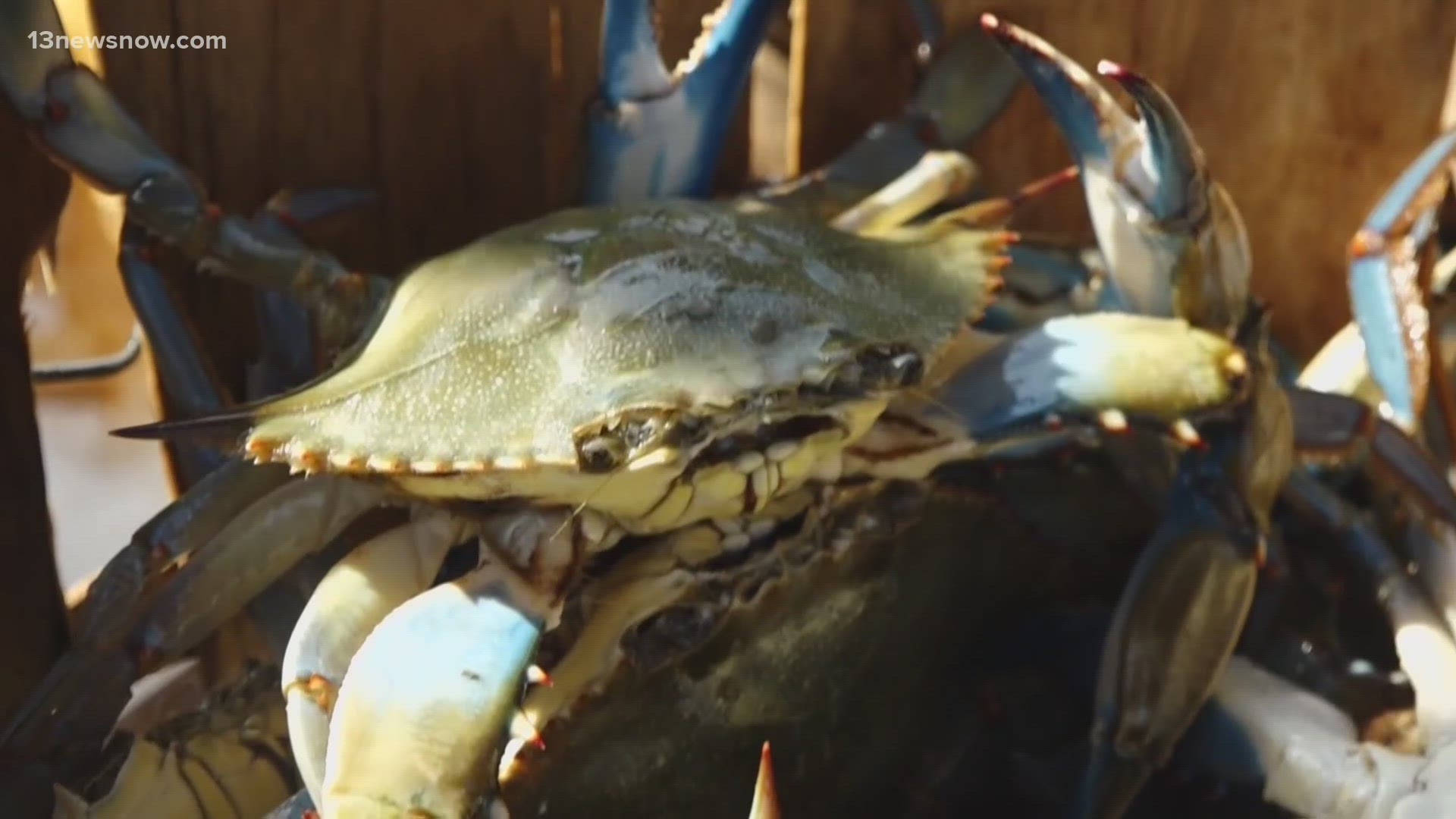NORFOLK, Va. — Delicious, succulent and valuable.
Here in Hampton Roads, blue crabs are the most iconic species in the Chesapeake Bay, propelling commercial fishing into a $30 million industry every year.
If you travel north to Maryland, they’re more than just a food resource - but a sense of state pride and tradition.
That is why it’s hard to grasp that, 4,000 miles away in Europe, the blue crab is becoming public enemy number one.
In the waters off the coast of Italy, clams reign supreme, and an unexpected surge in our beloved blue crab is decimating the population of Italians’ favorite seafood.
Fishermen, lobbying groups and environmentalists have sounded the alarm about the risks from a summer surge in the population of the fast-reproducing invasive species. The crabs are devouring stocks of eels, clams and mussels and wreaking havoc on fishing nets.
According to the Associated Press, 50% of clams, mussels, and oysters have been damaged by the blue crab, which reproduces fast and has no natural predators.
Italy is the largest producer of clams in Europe and the third largest in the world after China and South Korea, according to U.N. Food and Agriculture Organization data from 2021.
Once considered rare in Europe, environmentalists with the Chesapeake Bay Foundation believe warmer waters due to climate change may have brought on the increase in population.
The problem has become so bad that the Italian government has allocated 2.9 million euros, about $3 million, to fight the invasion.
Some fishing associations and restaurants overseas are embracing this new way of life, though, hoping to introduce Italians and their palates to the beloved American staple.
Ironically, here at home, the blue crab population has struggled over the last decade.
However, the number of blue crabs living in the Chesapeake Bay is showing improvement after reaching record lows in 2022, a survey conducted jointly by Virginia and Maryland found.
The 2023 Blue Crab Winter Dredge Survey put the estimated total crab abundance at 323 million, compared to the 227 million estimated in 2022, the Virginia Marine Resources Commission (VMRC) said.

